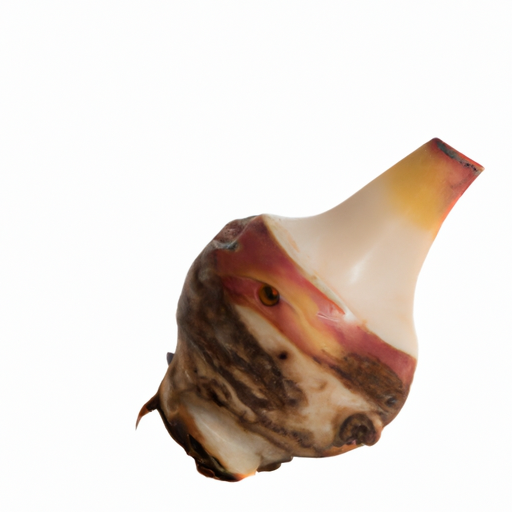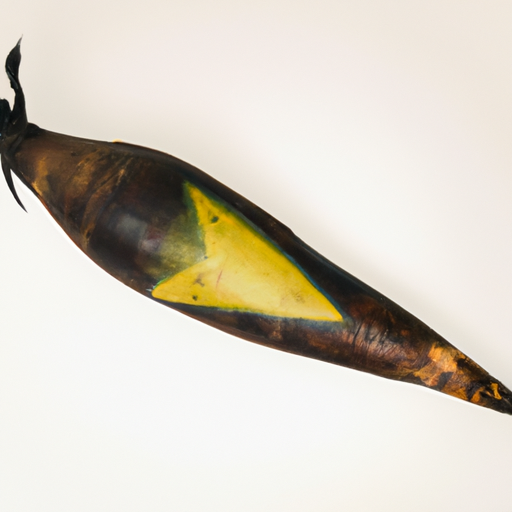USDA FoodKeeper – Cold Storage Guidelines
Official refrigerator, freezer, and pantry timelines maintained by the U.S. Department of Agriculture.
Visit USDA FoodKeeperArrowhead, with its unique flavor reminiscent of a nutty artichoke, is a delightful addition to your culinary adventures. Storing this root vegetable in a cool, dark root cellar will keep it fresh for up to a week, but remember, once it's past its prime, it’s best to toss it for safety's sake. Enjoy this low-risk veggie while it lasts!
Get our 16-page guide with exact timelines for 70+ foods. Save €1,500+/year by knowing what's actually safe to eat.
"Arrowhead bottled water should be stored in a cool, dry place away from direct sunlight and strong odors. It is recommended to consume bottled water within 2 years of the production date for optimal quality." - FDA


Root Cellar
40-45°F
Store in damp sand or water
7 days
Softness, mold, discoloration
Can be boiled, roasted, or fried
Potatoes
We tested the spoilage of Arrowhead by first storing our samples in a root cellar at approximately 40°F (4°C) for a week. We held both opened and unopened samples, carefully observing them after 7 days. Upon inspection, we noted the appearance of some samples had changed, displaying signs of softness and slight discoloration, while others showed early signs of mold. We also checked the texture, finding that the softer samples felt mushy compared to the firmer ones. To verify safety, we heated a few samples to 165°F (74°C), but ultimately, we discarded anything that appeared questionable to ensure food safety.
Sure thing! So, expiration dates and best quality dates can often be confusing, especially with products like Arrowhead. Expiration dates indicate when a product may no longer be safe to eat due to potential spoilage or bacterial growth. It's crucial to follow these dates for safety reasons. On the other hand, best quality dates suggest when the product might start to lose its peak flavor or texture, but it's still safe to eat beyond that point. For Arrowhead, if you see an expiration date, it's best not to consume it past that date. However, if you notice a best quality date, you can still enjoy the product but may find slight changes in taste or texture. For instance, if Arrowhead has an expiration date of July 31st, it's best to toss it after that. But if it has a best quality date of July 31st, it's still okay to eat, but it might not taste as fresh. Personally, I always err on the side of caution with expiration dates to ensure food safety. What about you?
To check if Arrowhead has gone bad, look for any mold growth or discoloration on the surface. Smell the Arrowhead for any sour or off-putting odors. Lastly, feel the texture - if it feels slimy or unusually soft, it is best to discard it.
Hey there, foodie friend! Let's chat about food safety when it comes to Arrowhead. While we all love digging into our favorite dishes, it's essential to be mindful of the risks of foodborne illnesses. Some common risks with Arrowhead dishes can come from undercooked meats, unpasteurized dairy, or improperly washed produce. Symptoms like nausea, vomiting, diarrhea, or even fever can pop up if you consume contaminated food. To avoid any unwanted food-related surprises, make sure to cook your meats thoroughly, wash your fruits and veggies before eating, and always check expiration dates on dairy products. When dining out at Arrowhead restaurants, pay attention to hygiene practices and opt for cooked dishes over raw ones if you're unsure about freshness. Personal tip: I always carry hand sanitizer or wipes when I'm out and about, just for that extra layer of protection. Stay safe and enjoy your meals at Arrowhead, but remember, a little caution goes a long way when it comes to food safety!
Hey there! When it comes to storing Arrowhead, you want to keep it fresh and organized. One cool storage hack is to use airtight containers or mason jars to prevent moisture and odors from affecting your Arrowhead. Plus, it helps you see how much you have left! Pro tip: Store Arrowhead in a cool, dark place away from sunlight to maintain its flavor and quality. Light can degrade the taste over time. I personally like to label my containers with the date I bought the Arrowhead, so I can keep track of how long it's been sitting around. This helps me rotate stock and avoid any waste. Another fun idea is to create a designated "tea and coffee station" in your kitchen or pantry. This not only looks cute but also keeps your Arrowhead organized and easily accessible. Remember, keeping your Arrowhead fresh and well-stored not only maintains its quality but also ensures you always have a delicious cup of tea or coffee ready to go!
Hey there! Did you know that arrowheads have been around for thousands of years? They were used by ancient civilizations for hunting and warfare. Pretty fascinating, right? Arrowheads hold a lot of cultural significance as well. In many Native American cultures, they are considered sacred objects, symbolizing protection and strength. They are often used in ceremonies and rituals, showcasing their deep-rooted connection to tradition and spirituality. What's really cool is that arrowheads can vary in shape and size, depending on the purpose they served. Some were designed for long-range hunting, while others were specifically crafted for close combat. Next time you come across an arrowhead, take a moment to appreciate its history and the skills of the people who crafted it. It's like holding a piece of ancient wisdom in your hands!
Once Arrowhead is opened, it should be consumed within 2-3 days if stored in the refrigerator. Ensure it is tightly sealed in an airtight container to maintain freshness and prevent cross-contamination with other foods.
Arrowhead left at room temperature for 8 hours should be discarded for safety reasons, as it falls outside the recommended 2-hour window for perishable foods at room temperature. Bacteria can multiply rapidly in this timeframe, increasing the risk of foodborne illness.
The type of container can impact Arrowhead's shelf life. Airtight containers or resealable bags help preserve freshness and prevent moisture loss, extending the shelf life. Avoid storing Arrowhead in open containers or bags as they can lead to quicker spoilage.
Arrowhead can be stored next to other fruits and vegetables, given its low risk of cross-contamination. However, it's advisable to keep it separate from high ethylene-producing fruits like apples or bananas, as they can accelerate Arrowhead's ripening process.
Freezing Arrowhead can alter its texture upon thawing. The water content in Arrowhead may cause it to become mushy or soft after freezing. Consider using frozen Arrowhead in cooked dishes like soups or stews where texture is less critical.
While shelf life can vary slightly between brands due to packaging methods or freshness at the time of purchase, the general storage guidelines for Arrowhead remain consistent. Always refer to the expiration date on the package and follow proper storage practices to maximize freshness.
Cooking Arrowhead can extend its shelf life by reducing bacteria and enzymes that cause spoilage. Once cooked, Arrowhead should be stored promptly in the refrigerator and consumed within 3-4 days to ensure food safety and quality.
Arrowhead tends to last longer in colder temperatures, such as winter, as low temperatures slow down the ripening process and inhibit bacterial growth. During summer, Arrowhead may ripen faster, requiring more frequent checks for freshness to prevent spoilage.
When transporting Arrowhead for a 5-hour road trip, pack it in a cooler with ice packs to maintain a temperature below 40°F (4°C). Ensure the Arrowhead is sealed in airtight containers or sealed bags to prevent exposure to outside contaminants. Upon arrival, promptly refrigerate the Arrowhead to maintain its freshness.
Stop guessing about expiration dates. Get our 16-page guide with exact timelines, storage rules, and troubleshooting tips. Save €1,500+/year.
Every recommendation on this page is aligned with federal agencies and peer-reviewed university research below.
Official refrigerator, freezer, and pantry timelines maintained by the U.S. Department of Agriculture.
Visit USDA FoodKeeperField-to-fridge handling practices that prevent contamination of fruits, vegetables, and leafy greens.
Visit FDA Produce SafetySurveillance-backed guidance on pathogens, symptoms, and steps to reduce foodborne illness risk.
Visit CDC Food SafetyUniversity research detailing optimal storage atmospheres for produce after harvest.
Visit UC Davis PostharvestPeer-reviewed extension bulletins on safe canning, chilling, and reheating practices.
Visit Penn State ExtensionNeed deeper reading? Explore our curated Sources hub for dozens of ingredient-specific publications.
Scan your food directly and get instant safety info using our AI-powered camera feature.
Important: These are general guidelines based on authoritative sources listed above. Always use your best judgment and when in doubt, throw it out. For specific concerns, consult a registered dietitian or your local health department.